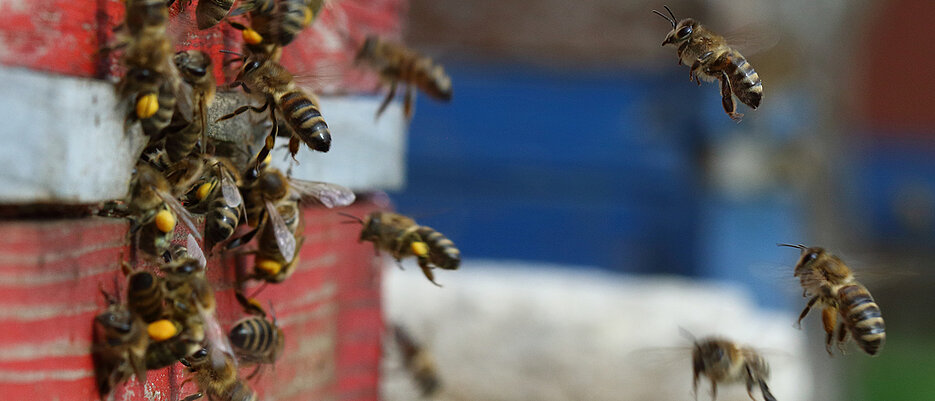For honeybees to overwinter successfully, several factors must work together. Researchers at the University of Würzburg have now identified a crucial one: The more diverse the diet, the greater the chances of survival.
Especially in temperate climates, winter poses a major challenge for honeybee colonies. To ensure their survival, the animals must maintain the right temperature in the hive and raise the next generation of workers. The availability of pollen from flowers plays a vital role as well.
However, it is not just the quantity of food that matters. As researchers at Julius-Maximilians-Universität Würzburg (JMU) have now discovered, the diversity of plants providing pollen also plays an important role.
The study was led by Professor Ingolf Steffan-Dewenter, Chair of Animal Ecology and Tropical Biology at JMU, and is part of the European project BeeConnected . The team has now published the results of the study in the Journal of Applied Ecology.
Balanced diet ensures resilient bees
Just like humans, bees also need various nutrients: amino acids, fatty acids, vitamins, proteins and minerals.
"A rich and balanced diet not only ensures successful brood development, but it also promotes the overall health of the bee colony - and healthy bees are more resistant to stressors," explains biologist Giulia Mainardi, PhD student in the project.
The development of the winter bees, which sustain the colony during the cold months, also depends on access to high-quality food resources..
The researchers wanted to know how different landscapes and weather conditions influenced the survival rate of honeybee colonies. To this end, they investigated pollen diversity - i.e. the variety of flowers that the bees collected - in Germany, France and Greece as well as the number of days on which the bees were able to forage due to the weather.
Pollen diversity as the seasons change
"We found that areas with high agricultural use provide bees with a higher diversity of pollen in autumn. This is probably also due to agro-environmental measures such as organic farming, flower strips and intercropping," says Mainardi.
In summer, on the other hand, pollen diversity was greater in near-natural areas. "Presumably because these also have a wider range of plants when agricultural areas have a lack of flowers after the flowering period of the dominant crop," Mainardi continues.
The study shows that the survival of honeybee colonies was much higher at locations with high pollen diversity, whereas the results regarding the weather conditions were less conclusive. "Our results underpin that the survival of colonies during winter depends not only on parasites like the Varroa mite and bad weather conditions but also on the quality of food resources," explains Steffan-Dewenter.
How animals and humans can benefit
The researchers clearly recommend preserving and enhancing floral diversity, with cooperation among beekeepers, farmers, urban planners and conservationists. In addition to honeybees, other important pollinators such as bumblebees, solitary wild bees, syrphid flies and butterflies would also benefit.
This would not only benefit honeybee health, but also ensure pollination services, high crop yields and contribute to food security for humans.
Original publication
Giulia Mainardi, Douglas Sponsler, Etienne Minaud, Filippos Vardakas, Charistos Leonidas, Fabrice Requier, Fanji Hatjina, Ingolf Steffan‐Dewenter: "Floral diversity enhances winter survival of honeybee colonies across climatic regions"; in Journal of Applied Ecology, doi: https://doi.org/10.1111/1365-2664.70054







